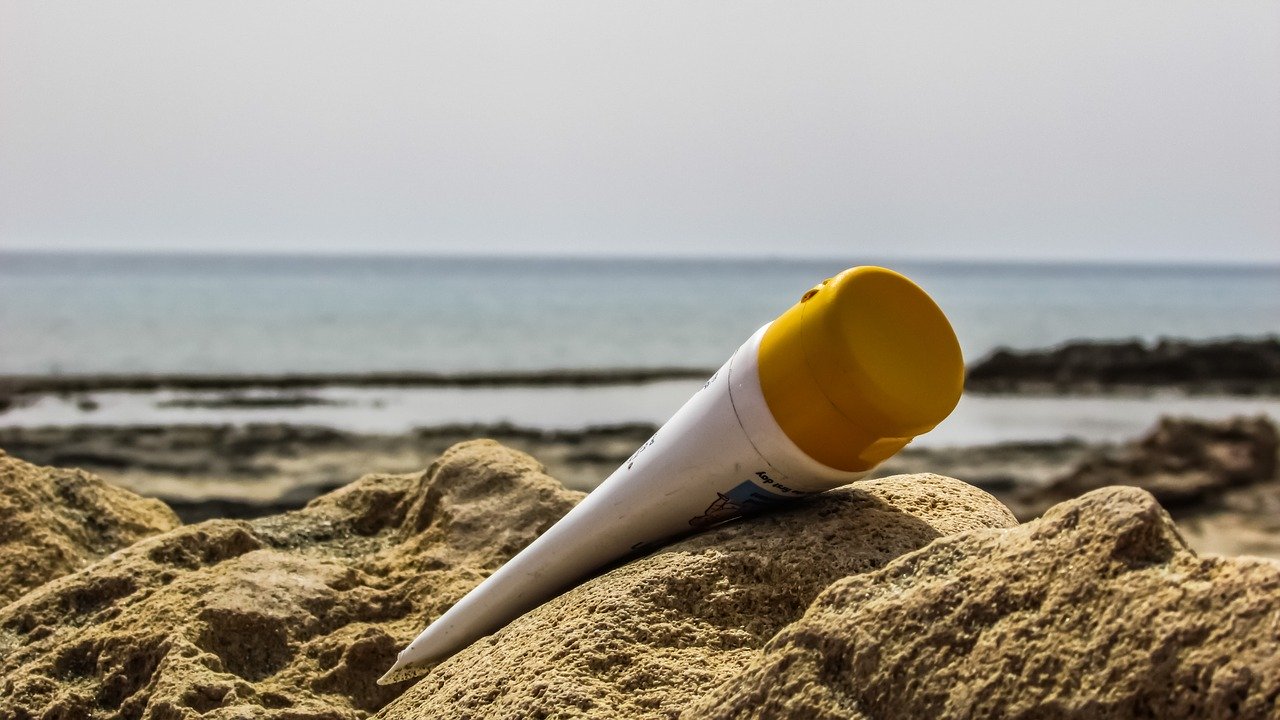Octocrylene is known by many names including 2-Ethylhexyl 2-cyano-3,3-diphenyl-2-propenoate, 2-Ethylhexyl 2-cyano-3,3-diphenylacrylate, UV Absorber-3, 2-Propenoic acid,2-cyano-3,3-diphenyl-,2-ethylhexyl ester and octocrilene and is found in many cosmetic products including sunscreen, lip balm, face cream and make-up foundation.
Octocrylene protects the skin against the ultraviolet radiation from the sun. However, as octocrylene is not strong enough on its own, other ultraviolet filters have to be added which increases the sun protection factor. In addition, octrocylene can also enhance other ultraviolet filters, eg octocrylene ensures that butyl methoxydibenzoylmethane does not degrade.
Research has shown that octocrylene may have an indirect impact on the environment. Whilst studies undertaken have shown that there is a gradual accumulation of octocrylene in coral, it has been shown that other ingredients in sunscreen products may increase the degree and rate it is absorbed by corals and exacerbate the toxicity of sunscreen products.
It is also known that octocrylene can be absorbed through the skin into the body and can stay in the blood for hours, but currently it is unclear exactly what sort of long-term health issues this may cause. One study has shown that octocrylene may lead to contact dermatitis in children. In addition, it has been seen that those adults who develop a photoallergy from ketoprofen frequently have positive patch test reactions to octocrylene.
Although it is currently approved for use in the United States, the strength of the formula is limited to a maximum of 10% octocrylene concentration.
However due to public health concerns, the Federal Drug Agency has set a November 2019 deadline for manufacturers to provide safety data on their sunscreens, including evaluations of systemic absorption, the risk of cancer from the chemicals, and their effect on reproductive health.
The European Union and Health Canada also allows its use up to 10% concentration.
The US Virgin Islands have banned sunscreens containing octocrylene (plus oxybenzone and octinoxate). The legislation will come into effect in the following stages:
- from 31 December, importing products containing octocrylene, oxybenzone and octinoxate for sale will be illegal;
- from 30 September 2020, selling, offering for sale and distributing such products will be illegal; and
- from 1 January 2021, using, possessing or bringing them into the territory will be illegal.
The Pacific Ocean archipelago of Palau have also banned sunscreens that contain octocrylene. Their legislation in fact is currently more wide ranging than other countries as it bans sunscreens that contain octocrylene and nine other chemicals (namely, oxybenzone (benzophenone-3); octinoxate; 4-methyl-benzylidene camphor; triclosan; methyl paraben; ethyl paraben; butyl paraben; benzyl paraben; and phenoxyethanol). The legislation comes into effect on 01 January 2020 and anybody entering Palau with the prohibited items will have them confiscated.
For a list of brands that include octocrylene in their list of ingredients please see: https://householdproducts.nlm.nih.gov/cgi-bin/household/brandstbl=chem&id=786&query=octocrylene&searchas=TblChemicals
https://www.ewg.org/skindeep/ingredient/704206/OCTOCRYLENE/

